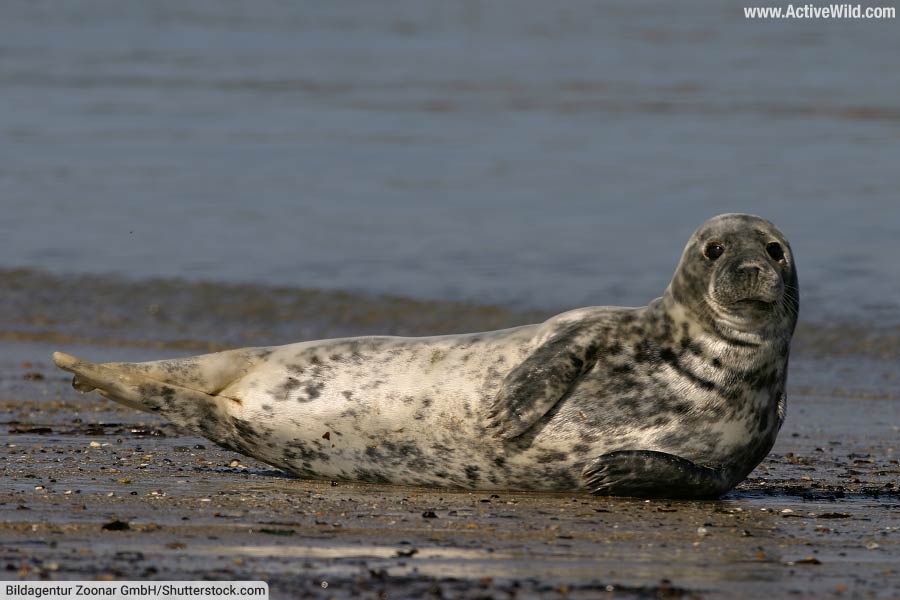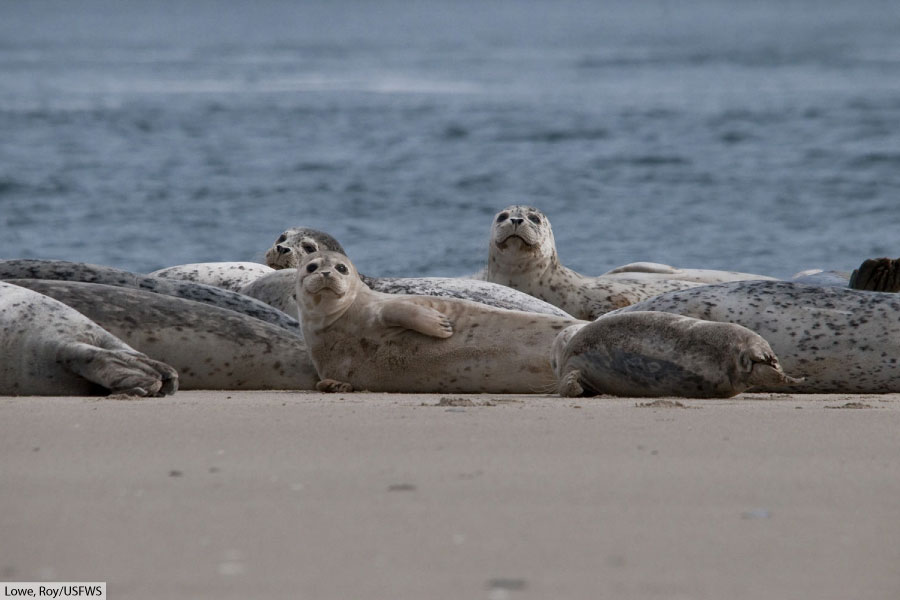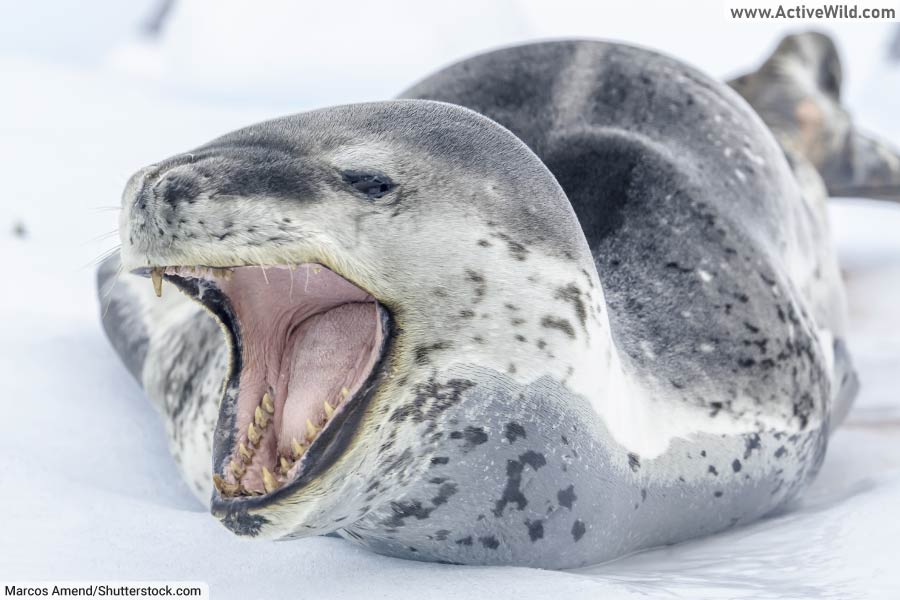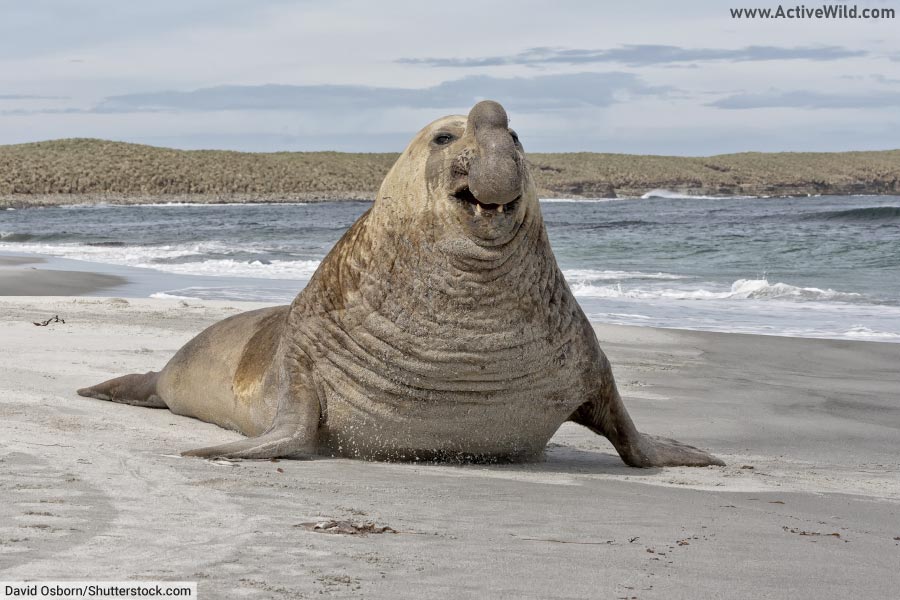Uncover the several types of seal with this entire checklist of seal species, with photos and information.
Seal Species Index
Seal Households: The Three Fundamental Sorts Of Seals
Seals are semi-aquatic marine mammals categorised into three households: Phocidae (true seals), Otariidae (eared seals – this group consists of fur seals and sea lions), and Odobenidae (walrus).
On this web page you will discover photos and information on each dwelling true seal species.
Pinnipeds
Collectively, the species within the three households listed above make up the mammal group Pinnipedia, members of that are often called pinnipeds. Due to this fact, all seals, fur seals, sea lions and the walrus (which is the one member of its household) are pinnipeds.
True Seals
Like all pinnipeds, true seals are tailored for all times in water, with streamlined our bodies, flippers, and a thick layer of blubber for insulation. Their massive eyes and delicate whiskers support in searching prey in darkish, chilly waters.
True seals lack exterior ear flaps, whereas eared seals (sea lions and fur seals) have seen exterior ears.
True seals are additionally much less agile on land in comparison with their eared counterparts. It is because, not like eared seals, true seals are unable to swivel their hind flippers round and stroll on them. As soon as within the water, nevertheless, true seals are glorious swimmers and divers.
True seals are primarily present in chilly and temperate coastal waters in each the Northern and Southern Hemispheres, with many species inhabiting the Arctic and Antarctic areas, and some tailored to remoted or hotter areas such because the Mediterranean, Caspian Sea, Lake Baikal, and the tropical waters of Hawaii.
The food regimen of most seals consists of fish, squid, and crustaceans, though some species, such because the leopard seal, feed on different marine mammals.
Seals are identified for his or her social conduct, typically gathering in massive colonies throughout breeding season.
Baikal Seal

- Scientific Title: Pusa sibirica
- The place Discovered: Lake Baikal, Siberia, Russia
- Typical Dimension: 1.2–1.4 m / 3.9–4.6 ft
- Typical Weight: 50–130 kg / 110–285 lb
- Distinguishing Options: Smallest true seal; solely freshwater seal species; darkish grey again with lighter underside
- IUCN Conservation Standing: Least Concern
The Baikal seal, or nerpa, is exclusive as the one seal species discovered solely in freshwater. Endemic to Russia’s Lake Baikal, it thrives within the lake’s icy waters. Small and plump, it has a uniformly grey coat. Baikal seals feed on fish, significantly golomyanka (Baikal oilfish). They’re solitary and elusive, typically hauling out on ice.
Bearded Seal


- Scientific Title: Erignathus barbatus
- The place Discovered: Arctic Ocean and adjoining seas
- Typical Dimension: 2.1–2.7 m / 6.9–8.9 ft
- Typical Weight: 200–430 kg / 440–950 lb
- Distinguishing Options: Lengthy whiskers
- Scientific Title: ‘beard’; square-shaped flippers; rust-colored face
- IUCN Conservation Standing: Least Concern
Acknowledged by their lengthy white whiskers, bearded seals inhabit Arctic coastal areas and sea ice. These seals desire shallow waters the place they dive to forage on benthic prey like clams and shrimp. Their sq. entrance flippers and quick snouts are distinctive. Bearded seals are solitary and vocal, with males producing underwater songs throughout mating season. Pups are precocial and born on drifting ice. The rust-colored stains round their mouths come from foraging in sediment.
Caspian Seal
- Scientific Title: Pusa caspica
- The place Discovered: Caspian Sea
- Typical Dimension: 1.4–1.8 m / 4.6–5.9 ft
- Typical Weight: 50–86 kg / 110–190 lb
- Distinguishing Options: One of many smallest pinnipeds; grayish coat; solely marine mammal in Caspian Sea
- IUCN Conservation Standing: Endangered
Endemic to the Caspian Sea, the Caspian seal is likely one of the smallest true seals. They’ve a brief, stocky construct and a silvery-gray coat. This species is extremely tailored to a closed sea setting and breeds on winter ice sheets. Their food regimen consists of a wide range of fish and crustaceans. Caspian seals face threats from air pollution, habitat loss, and illness outbreaks, and are listed as endangered as a consequence of a declining inhabitants and low pup survival charges.
Crabeater Seal


- Scientific Title: Lobodon carcinophaga
- The place Discovered: Circum-Antarctic pack ice
- Typical Dimension: 2.2–2.6 m / 7.2–8.5 ft
- Typical Weight: 200–300 kg / 440–660 lb
- Distinguishing Options: Sieve-like enamel for filtering krill; light-colored coat with scars
- IUCN Conservation Standing: Least Concern
Regardless of the title, crabeater seals feed nearly solely on Antarctic krill, utilizing specialised enamel that filter them from seawater. Discovered on Antarctic pack ice, they’re probably the most plentiful seal species. They’ve slender, pale-colored our bodies typically marked with scars from leopard seal assaults. Crabeater seals are glorious swimmers and may dive to reasonable depths. They’re seasonally migratory and have a tendency to haul out on ice in small, free teams.
Grey Seal


- Scientific Title: Halichoerus grypus
- The place Discovered: North Atlantic Ocean
- Typical Dimension: 1.65–2.5 m / 5.4–8.2 ft
- Typical Weight: 103–310 kg / 227–683 lb
- Distinguishing Options: Lengthy nostril; noticed grey or brown coat; sexual dimorphism
- IUCN Conservation Standing: Least Concern
Grey seals are identified for his or her horse-like elongated snouts and sexually dimorphic dimension (males are considerably bigger than females). They inhabit the North Atlantic Ocean and breed in massive colonies on distant islands and coasts. Their coat shade varies from grey to brown, typically mottled with spots. Grey seals feed on fish and infrequently cephalopods. Males are territorial in the course of the breeding season, typically participating in fierce fights. The grey seal communicates not solely with vocalizations, but in addition by clapping its flippers.
Harbor Seal


- Scientific Title: Phoca vitulina
- The place Discovered: Northern Hemisphere coasts
- Typical Dimension: 1.2–1.9 m / 3.9–6.2 ft
- Typical Weight: 50–170 kg / 110–375 lb
- Distinguishing Options: Rounded head; no ear flaps; variable noticed coat
- IUCN Conservation Standing: Least Concern
Harbor seals are probably the most widespread pinniped species, discovered alongside temperate and Arctic coastlines of the Northern Hemisphere. They’ve a rounded head, V-shaped nostrils, and a noticed coat starting from gentle grey to darkish brown. These seals are opportunistic feeders, consuming fish, crustaceans, and mollusks. They haul out on seashores, rocks, and ice to relaxation and molt. Harbor seals are usually solitary, however will collect in teams at haul-out websites.
You’ll find out extra about this species on this web page: Harbor Seal Details
Harp Seal


- Scientific Title: Pagophilus groenlandicus
- The place Discovered: North Atlantic & Arctic Oceans
- Typical Dimension: 1.7–2.0 m / 5.6–6.6 ft
- Typical Weight: 115–140 kg / 254–309 lb
- Distinguishing Options: Black harp-shaped again markings; white pups
- IUCN Conservation Standing: Least Concern
Native to the North Atlantic and Arctic Oceans, harp seals are simply acknowledged by the harp-shaped markings on the backs of adults. Pups are born with iconic white fur, which they shed after a number of weeks. These seals breed on pack ice and feed on fish and crustaceans. Harp seals are identified for his or her lengthy migrations and spend most of their time in water. Their massive flippers and streamlined form make them agile swimmers.
Hawaiian Monk Seal


- Scientific Title: Neomonachus schauinslandi
- The place Discovered: Hawaiian Islands
- Typical Dimension: 2.1–2.25 m / 6.9–7.4 ft
- Typical Weight: 169–203 kg / 373–448 lb
- Distinguishing Options: Silvery-gray coat; no ear flaps; solitary
- IUCN Conservation Standing: Endangered
One of the endangered seals, the Hawaiian monk seal is endemic to the Hawaiian Islands. With a smooth, silvery-gray coat and slender physique, they inhabit sandy seashores and coastal waters. These seals forage in coral reefs and sandy bottoms, consuming fish, squid, and crustaceans. Sometimes solitary, they relaxation on seashores in the course of the day. Their inhabitants faces threats from human disturbance, entanglement, and low juvenile survival. Conservation efforts deal with habitat safety and rehabilitation.
Hooded Seal
- Scientific Title: Cystophora cristata
- The place Discovered: North Atlantic
- Typical Dimension: 2.0–3.0 m / 6.6–9.8 ft
- Typical Weight: 150–400 kg / 330–880 lb
- Distinguishing Options: Inflatable nasal sac in males
- IUCN Conservation Standing: Susceptible
Discovered within the North Atlantic, hooded seals are well-known for the inflatable nasal sac, or ‘hood,’ that males use in courtship shows and fights. Males are a lot bigger than females and have a silver-gray coat with darkish blotches. These deep-diving seals feed on squid and fish in chilly offshore waters. They’ve one of many shortest nursing durations of any mammal; simply 4 days. Throughout these 4 days, the pup doubles in dimension.
Leopard Seal


- Scientific Title: Hydrurga leptonyx
- The place Discovered: Antarctic pack ice
- Typical Dimension: 2.8–3.8 m / 9.2–12.5 ft
- Typical Weight: 300–500 kg / 660–1100 lb
- Distinguishing Options: Lengthy, slender physique; massive head; noticed sample
- IUCN Conservation Standing: Least Concern
Leopard seals have a slender, reptilian head and highly effective jaws. Their noticed coat provides them their title. Leopard seals are solitary and patrol the sides of ice floes. They feed on different Antarctic seals, penguins, and krill. Their vocalizations are eerie and melodic, used for communication in water.
You’ll find out extra about this species on this web page: Leopard Seal Details
Mediterranean Monk Seal


- Scientific Title: Monachus monachus
- The place Discovered: Mediterranean & jap Atlantic
- Typical Dimension: 2.4 m / 7.9 ft
- Typical Weight: 300–315 kg / 661–694 lb
- Distinguishing Options: Easy coat; makes use of sea caves for pupping
- IUCN Conservation Standing: Susceptible
With fewer than 800 people left, the Mediterranean monk seal is likely one of the world’s rarest pinnipeds. Discovered within the Mediterranean and components of the Atlantic, they relaxation and breed in coastal caves. These seals have a sturdy physique and darkish brown coat. They feed on a wide range of fish and cephalopods. As soon as widespread on seashores, they now keep away from human exercise. Conservation efforts have targeted on defending breeding caves and minimizing disturbance.
Northern Elephant Seal


- Scientific Title: Mirounga angustirostris
- The place Discovered: Japanese North Pacific
- Typical Dimension: 3.6–4.5 m / 11.8–14.8 ft
- Typical Weight: 750–2300 kg / 1650–5070 lb
- Distinguishing Options: Giant proboscis in males; very massive physique
- IUCN Conservation Standing: Least Concern
Northern elephant seals are the second-largest pinnipeds; solely the southern elephant seal is bigger. Males (that are far bigger than females) attain over 4 meters and sport a big proboscis, which is used to create and amplify sound.
Discovered alongside the Pacific coast of North America, northern elephant seals breed on sandy seashores and spend many of the 12 months at sea. They’re deep divers, feeding on squid and fish at nice depths. Males compete aggressively for harems, whereas females nurse pups for a few month. The inhabitants rebounded from close to extinction within the 1800s.
Ribbon Seal


- Scientific Title: Histriophoca fasciata
- The place Discovered: Bering & Okhotsk Seas
- Typical Dimension: 1.5–1.75 m / 4.9–5.7 ft
- Typical Weight: 55 kg / 121 lb
- Distinguishing Options: Darkish physique with 4 light-colored bands
- IUCN Conservation Standing: Least Concern
Ribbon seals are strikingly patterned, with darkish fur and daring white bands encircling their neck, tail, and flippers. Discovered within the Bering and Okhotsk Seas, they dwell on pack ice and are hardly ever seen on land. These seals feed on fish, squid, and crustaceans. Solitary by nature, they’re identified for his or her elusive conduct. Ribbon seals are properly tailored to icy habitats and are glorious divers, although little is thought about their social conduct.
Ringed Seal


- Scientific Title: Pusa hispida
- The place Discovered: Arctic Ocean & surrounding seas
- Typical Dimension: 1.1–1.5 m / 3.6–4.9 ft
- Typical Weight: 50–70 kg / 110–154 lb
- Distinguishing Options: Noticed ringed coat; smallest Arctic seal
- IUCN Conservation Standing: Least Concern
The ringed seal is the smallest Arctic seal, distinguished by darkish spots encircled by gentle rings on its coat. They’re essential prey for polar bears and are discovered all through Arctic and sub-Arctic areas. Ringed seals preserve respiratory holes in ice utilizing their sturdy claws. They feed on fish and invertebrates. Pups are born in snow dens on sea ice, offering safety from predators. Local weather change and ice loss pose severe threats to their survival.
You’ll find out extra about this species on this web page: Ringed Seal Details
Ross Seal


- Scientific Title: Ommatophoca rossii
- The place Discovered: Antarctic pack ice
- Typical Dimension: 1.68–2.5 m / 5.5–8.2 ft
- Typical Weight: 129–216 kg / 284–476 lb
- Distinguishing Options: Giant eyes; quick, broad snout
- IUCN Conservation Standing: Least Concern
Ross seals are the least-studied and least plentiful of Antarctica’s seals, dwelling in distant pack ice zones. They’re small and stocky with quick faces and enormous, expressive eyes. Their distinctive trilling vocalizations could be heard underwater. Ross seals feed totally on squid and fish. Solitary and infrequently seen, they spend most of their time in water and haul out solely often. Their distant habitat has helped protect them from important human disturbance.
Southern Elephant Seal


- Scientific Title: Mirounga leonina
- The place Discovered: Sub-Antarctic & Antarctic islands
- Typical Dimension: 2.6–5.8 m / 8.5–19 ft
- Typical Weight: 350–3700 kg / 770–8200 lb
- Distinguishing Options: World’s largest seal; male proboscis
- IUCN Conservation Standing: Least Concern
The southern elephant seal is the biggest pinniped, with males reaching as much as 6 meters and weighing over 3,000 kg. Discovered on sub-Antarctic islands, they breed in big colonies. Males struggle violently for entry to harems. These seals undertake lengthy foraging journeys within the Southern Ocean, diving deep for squid and fish. Their title comes from the male’s trunk-like nostril, utilized in dominance shows.
You’ll find out extra about this species on this web page: Southern Elephant Seal Details
Noticed Seal


- Scientific Title: Phoca largha
- The place Discovered: North Pacific & Bering Sea
- Typical Dimension: 1.4–2.1 m / 4.6–6.9 ft
- Typical Weight: 65–150 kg / 143–331 lb
- Distinguishing Options: Mild coat with darkish spots; rounded head
- IUCN Conservation Standing: Least Concern
Carefully associated to the harbor seal, the noticed seal inhabits the North Pacific and adjoining seas. Its gentle coat is marked with distinct darkish spots. These seals desire sea ice in the course of the breeding season and migrate with seasonal ice flows. They feed on fish and invertebrates. Noticed seals are shy and keep away from human contact. Some populations migrate over 2,100 miles.
Weddell Seal


- Scientific Title: Leptonychotes weddellii
- The place Discovered: Circumpolar Antarctica
- Typical Dimension: 2.5–3.5 m / 8.2–11.5 ft
- Typical Weight: 400–600 kg / 880–1320 lb
- Distinguishing Options: Darkish grey with gentle patches; makes use of enamel to take care of respiratory holes
- IUCN Conservation Standing: Least Concern
Weddell seals dwell farther south than some other mammal, thriving in Antarctic quick ice (ice that’s mounted to land) zones. They’re identified for sustaining respiratory holes in thick ice with their enamel. Weddell seals have a relaxed temperament and a silvery-gray coat with gentle blotches. They feed on fish, squid, and crustaceans. Their vocalizations are various and musical, utilized in social interactions. These seals are glorious divers and spend prolonged durations below ice in quest of prey, their delicate whiskers serving to them to navigate and hunt within the darkness.
Uncover Extra With Energetic Wild
Go to our essential animals web page for hyperlinks to animal info and a whole information to the animal kingdom: Animals
You’ll be able to see extra ocean animals on this web page: Ocean Animals Checklist with Footage & Details
You’ll find out extra about seals in Antarctica on this web page: Antarctic Seals Checklist And Details
You’ll find out extra about seals within the Arctic on this web page: Arctic Seals Checklist And Details


